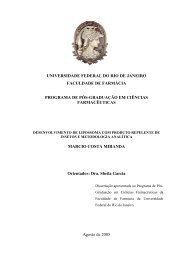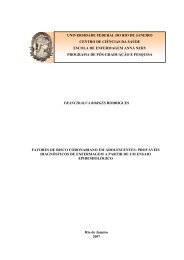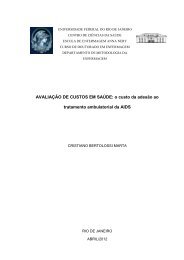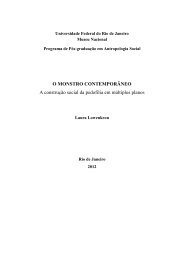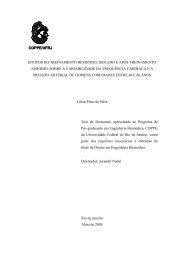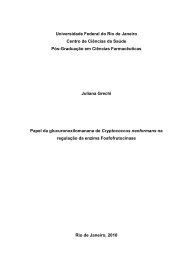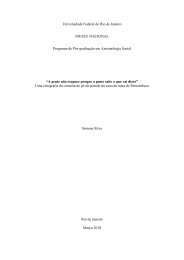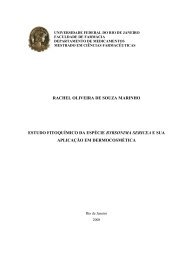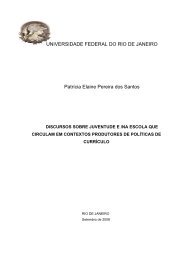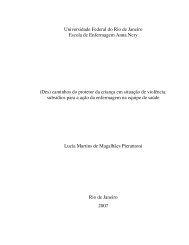(Eugenia dysenterica DC) com e sem casca - UFRJ
(Eugenia dysenterica DC) com e sem casca - UFRJ
(Eugenia dysenterica DC) com e sem casca - UFRJ
You also want an ePaper? Increase the reach of your titles
YUMPU automatically turns print PDFs into web optimized ePapers that Google loves.
ABSTRACT<br />
Antioxidant activity and total polyphenol content in cagaita (<strong>Eugenia</strong> <strong>dysenterica</strong> <strong>DC</strong>)<br />
with and without peels<br />
Exotic fruit have gained market worldwide, with good acceptance and growth. Cagaita<br />
<strong>Eugenia</strong> <strong>dysenterica</strong> <strong>DC</strong>), a native fruit of Cerrado that belongs to the family Myrtaceae, is<br />
included in this context. The fruits provide a wide variety of dietary antioxidants, such as<br />
vitamins C and E, carotenoids and other phenolic <strong>com</strong>pounds and these may contribute to the<br />
health benefits. Evaluation of antioxidant activity can be based on metal reducing power<br />
(FRAP, CUPRAC), hydroxyl radical scavenging (deoxyrribose assay), quantification of<br />
products formed during lipid peroxidation (TBARS, LDLs oxidation), peroxyl radical<br />
scavenging (ORAC, TRAP), organic radical scavenging (ABTS, DPPH), for example. The<br />
aim of this study was to determine the antioxidant capacity and phenolic <strong>com</strong>pounds of<br />
cagaita fruit, with (CCC) and without (CSC) peels, and physical and chemical characteristics<br />
of the fruit. Regarding pH and acidity, the fruit can be classified as acid and the pH value for<br />
CSC was 2.90 and 2.69 for the lot of CCC. As to <strong>com</strong>position, the fruit is not caloric, showing<br />
low levels of protein, carbohydrates and especially fat. According to ANVISA, the fruit of<br />
cagaita is regarded as rich in vitamin C, due to a higher contribution than 30% of DRI’s. The<br />
three methods used to evaluate antioxidant capacity provided satisfactory and promising<br />
results, whereas the fruit with peel showed the highest antioxidant activity in all tests and the<br />
ORAC method proved to be the most efficient. This high antioxidant capacity may be derived<br />
from the presence of bioactive substances such as phenolic <strong>com</strong>pounds and ascorbic acid.<br />
10



